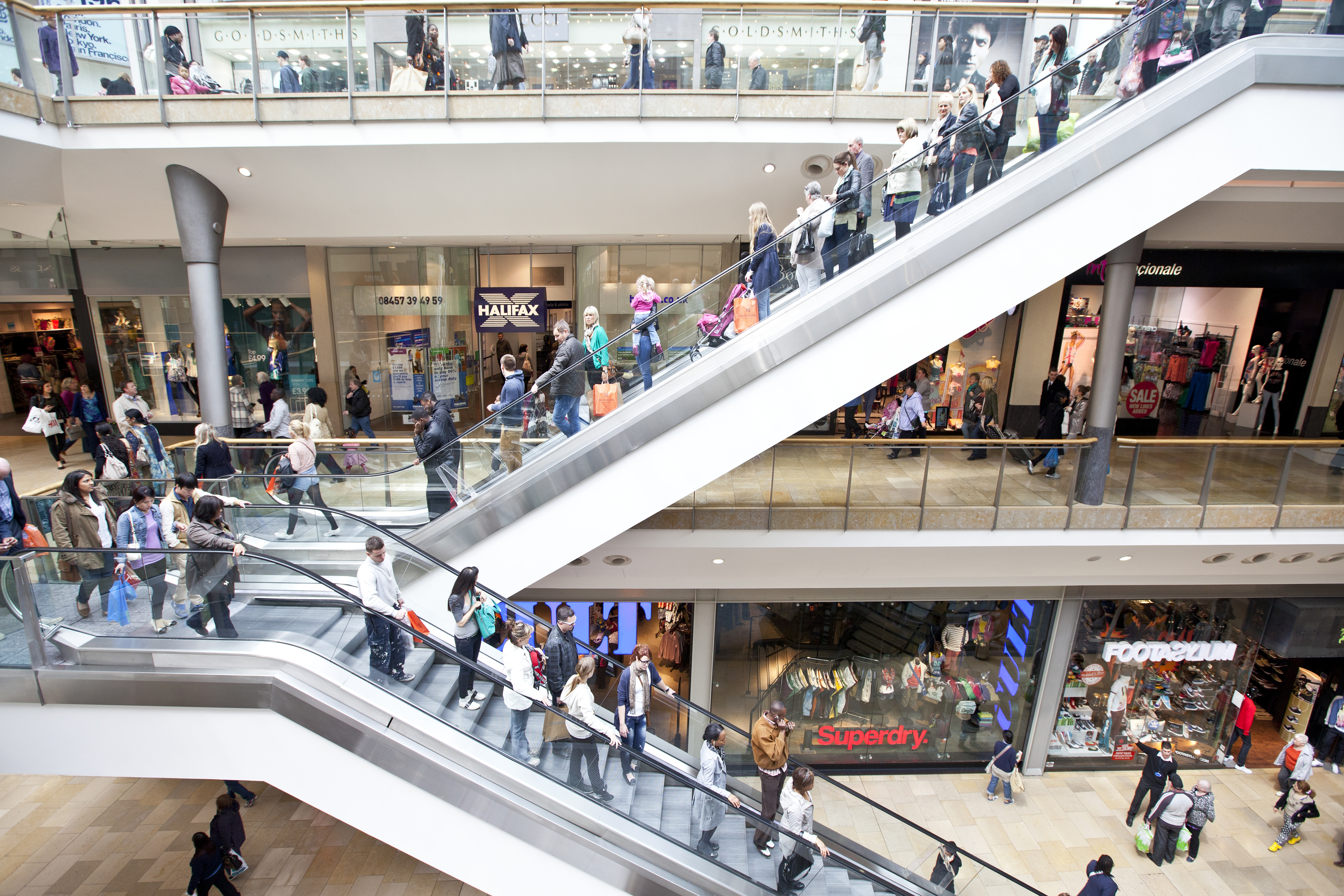Most brick-and-mortar stores share the same fear—losing sales and customers to Amazon and other online sellers. But these retailers can stay in the game by making their operations run smarter and providing customers with a new and improved experience. Internet of Things (IoT) technology can help you do just that.
Consumers want a new kind of in-store retail experience—one that is connected. In recent years, new IoT development has generated opportunities for savvy retailers to create that connected experience.
A report from Transparency Market Research (TMR) estimates that the global connected retail market will grow from $19.46 billion in 2017 to $82.31 billion by the end of 2025.
Implementing IoT in retail can mean big opportunities that can revolutionize an industry that badly needs a revolution. Let’s take a more in-depth look at the top five ways this transformation is happening, the technologies behind them, and what retailers need to be concerned about.
Five ways IoT development is transforming retail
1. Customer engagement
Brick-and-mortar retailers want to get customers into their stores and keep them there. Adding Internet of Things technology to retail environments can improve customer engagement, getting them to spend more time in your store and convincing them to buy things that weren’t on their shopping list.
This is accomplished by tracking customer patterns and interactions within the store through IoT sensors, motion-sensitive floor tiles, and video cameras.
These IoT devices let retailers answer the following questions:
- Are my displays effective?
- Are customers interacting with the product?
- Are they picking the product up and putting it in their cart, or putting it back?
- Why did they stop to look at the display in the first place?
Engagement can be tracked on several levels: with specific products, with displays, and with the larger store layout. As an example, IoT sensors and devices can track the number of people in a given aisle, logging where they stop and which items they place in their cart. Using the data gathered, you can determine whether someone is browsing (based on how long someone lingers in an aisle) or if they’re looking for something specific. You can then figure out which products have greater potential to be impulse buys, and display them more effectively.
A connected customer also wants faster checkout. Amazon Go is leading the way with its checkout-free stores. Customers can also use an app on their smartphone to scan the barcodes on each item they purchase, bypassing the checkout line. Mobile payment options can also save shoppers time at checkout by eliminating credit card swipes.
Online ordering with local store pickup is another way to simplify checkout. Customers can get the simplicity of online shopping with the immediate gratification of an in-store purchase. Placing the “in-store pickup” location at the back of the store can still lead to plenty of impulse purchases along the way, which makes store layout and customer tracking even more important.
2. Inventory management
IoT technology simplifies inventory management, particularly for larger retailers who stock the same item in multiple locations throughout the store.
For example, it’s not enough to know you have AA batteries in stock—you also need to know if any AA battery displays are empty. Barren shelves won’t do you any good.
RFID can play an important role in retail inventory management. RFID tags can be used to track products throughout the supply chain—all the way down to specific items on a shelf—but these tags are too expensive to use on cheaper items. That makes sensors and cameras better devices for most inventory management.
Sensors and cameras are more expensive per unit, but they are used across multiple items and then re-used, making them more economical and cost-efficient. They’re also simpler to implement—they don’t require packaging to be modified or each product to be handled to attach a sticker or tag.
IoT can also be used to keep customers informed when a particular item is in stock, saving them the time and hassle of a pointless trip. This adds an extra benefit to the “in-store pickup” option: real-time stock checks from a simple web page (from the customer’s perspective).
3. Loss prevention
The same technologies used to monitor your inventory levels can also be used to detect and prevent theft.
Video displays in aisles let customers know they are being watched and recorded. That’s certainly beneficial, but nothing new. What is new is the IoT data analysis and algorithms at work behind these cameras—and that’s where you can pick up added value.
If a customer removes one expensive item from a shelf, that is considered normal. But what about when a customer starts picking up three or four at a time? If the item in question isn’t usually purchased in large quantities, that might be cause for alarm. Your IoT system can send an alert to security to keep an eye on the area to watch for theft.
Even better, simple quality-of-life IoT upgrades to your retail store can enhance your security. Take a simple interactive display as an example. When a customer removes an item from its shelf, they might get a recommendation for another item. Whether the recommendation is taken or not, it certainly reminds the customer that they are not alone—“Big Brother” is watching.
IoT devices let retailers open up displays that have been locked down in recent years. Small, relatively expensive items—razor blades, for example—are a popular target for shoplifting, forcing many retailers to lock them up in the display case. If IoT sensors send an alert each time several are picked up at once, it’s not necessary to do that. That means customers don’t have to track down an employee every time they want to buy a fresh pack of razor cartridges. Many of those customers instead turned to online retailers for their razors because of that hassle, and this could be a chance to win them back.
The use of IoT sensors and cameras for theft deterrence allows retailers to open these displays again, encouraging sales while protecting against theft.
4. Big data analysis
All of these sensors and cameras capture a vast amount of IoT data that the retail industry can use—big data that’s useless without serious analysis to interpret it.
Big data analysis can provide enormously important information to retailers. Why did that particular item got put back on the shelf? Why did a customer choose a different item? Was it price, or was the display for the other one more effective?
With the right kind of data—and effective analysis to go along with it—retailers can significantly improve their bottom line by adjusting aspects of their store, like the layout, inventory management, or product placements. Retailers can even conduct their own market analysis, figuring out their ideal customer and targeting advertisements to bring them in.
5. Consumer profiling
One of the best ways to gather information on your customers is through loyalty programs. IoT expands what you can do with these programs.
Customer loyalty programs allow consumers to log into their account on their smartphone while shopping. This gives retailers a chance to collect extremely valuable data about the ways that customer interacts with the store—and helps them figure out ways to get that customer to buy more during that shopping trip. For example, if a shopper picks up a box of pasta and places it in their cart, a coupon for pasta sauce can be sent to their phone. Not only does this improve the chance that the customer will spend more, it will incentivize them to log into your app every time they come, helping you improve your data collection effort.
Even better, you get to learn about your customers: what they buy, how much they’re willing to spend, how often they shop, and what time of day they like to come. This information can be used for targeted advertising for future shopping trips. You can reach out to them at the right moment with the right information. Because the information and offers you’re providing are actually valuable, you are no longer seen as spam—you can become a part of their daily (or weekly, or monthly) routine.
IoT toys for retailers
We have mentioned IoT sensors, cameras, and RFID tags. Other IoT devices in retail include:
- Interactive displays that can suggest related items to shoppers, provide coupons, and capture data on when items are removed and/or replaced.
- Digital mirrors that allow customer to get a 360-degree view of themselves when trying on clothes. They can try outfits on virtually, reducing multiple trips to the dressing room.
- Self-checkouts that empower customers to check themselves out while capturing data on purchasing trends and inventory.
- Digital signage that can be changed on the fly based on customer traffic.
- IoT shelves that can detect when stock is running low and alert you that it is time to restock.
Security: The biggest concern for retailers
Retailers should be excited to use these IoT developments to increase sales, attract new customers, and to better compete with the online giants—but you should also be concerned about security.
Implementing IoT in retail means you’re capturing a lot of data about your customers, your products, and your business. This data is extremely valuable—and extremely personal. You have a responsibility to be a good steward of the information your customers entrust you with.
Networked sensors and cameras open up more doors for hackers. This is a legitimate threat, and retailers are right to be concerned—the infamous 2013 Target breach was possible only by exploiting a vulnerability in the networked HVAC system, after all. To complicate matters, many IoT retail projects use a combination of off-the-shelf pieces with custom work in order to meet the client’s budget and timeline.
These off-the-shelf solutions need to be reliable and safe. Make sure you’re working with a reputable company that is well-versed in the security side of IoT so your data—and your customers’ data—is secure.
IoT technology presents the retail industry with exciting new opportunities to grow their businesses. IoT devices can help you engage customers, increase sales, manage your inventory, and deter theft more efficiently. The key is knowing how to use these devices properly, what data to gather, and how to analyze that data. Training your team appropriately or working with outside experts who already know how to do it will let you join the IoT retail revolution.

